Website sections:
Current section's content:
- You Can Manage and Program Creativity
- Creative Abilities and Creative Thinking Skills Management
- Briefly About CreativityModel Method Usage
- CreativityModel Method Usage Opportunities and End-User License Agreement
- Current Version of CreativityModel Method
- CreativityModel Method Abstract
- CreativityModel Method Version Changes
- CreativityModel Method Glossary
- Explanation of the Method's Component Parts and How the Component Parts Interact
- Explanation of How the Method's User Achieves Results
- CreativityModel Method - Generate Dots, Connect the Dots
- CreativityModel Method Usage Areas
- The Artist in You
- Growth of the Artist in You
- The Result Getter in You
- Applying the Result Getter in You
- About Choice Supported Creativity Usage
- The Problematic Side of Business Creativity
- Creativity Management and Business Creativity
- Sales CRM Software Development Example
- Why Does Creativity Management Matter and What Can You Do About This?
- Goal Oriented Creativity Management and CreativityModel Method
- Goal Oriented Creativity Management and Your Personal and Professional Life
- Teenager, Version 1 - Confusion
- Teenager, Version 2 - Career Development and Life Management
- Managers, Version 1 - Zigzagging Business Development
- Managers, Version 2 - Innovation Management and New Product and Service Development
- The President, Version 1 - Some of It Did Happen
- The President, Version 2 - Self-Expression, Conflict Resolution, Creativity and Leadership
- CreativityModel Method Development Background
- Further Development of CreativityModel Method



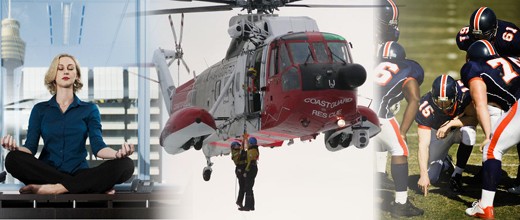
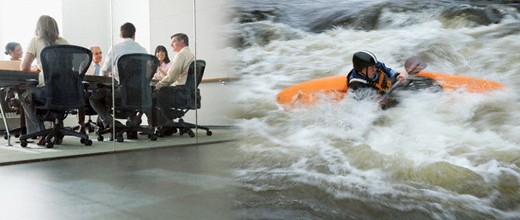



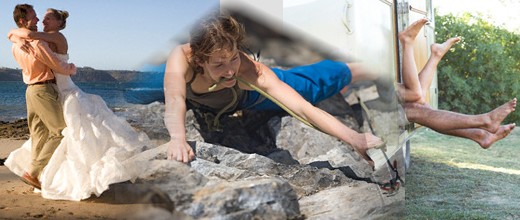


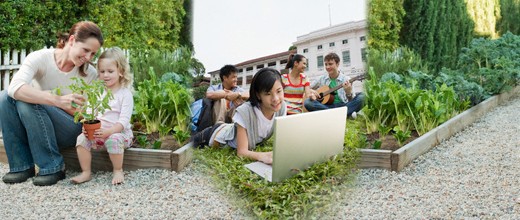
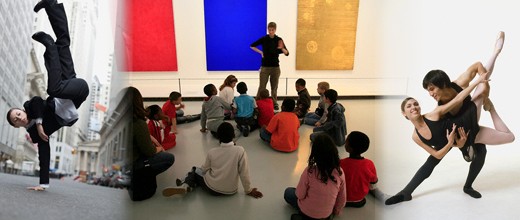







Growth of the Artist in You
CreativityModel Method addresses goal oriented business creativity and self-expressive artistic creativity usage in combinations. Both are needed in personal and professional everyday life.
This article is second in a four article series and accompanies the following articles: The Artist in You, Growth of the Artist in You (the current article), The Result Getter in You, Applying the Result Getter in You. This series describes CreativityModel Method usage areas.
So, what can you do with CreativityModel Method - namely, how can you relate this Method's usage to enhancing and improving your self-expressive creative thinking skills?
Here are some suggestions.
Contents
- Differentiate Between the Creative Thinking Skills Management Approaches
- Self Study and Self Training
- Start With Understanding
- Gain Expertise Through Experience
- CreativityModel Method Usage Looked from the Training Perspective
- How Do You Start a Specific Project?
- What Comes After the Project Starting Points?
- Experience, Expertise and Abilities
- Use and Reapply What You Already Know
- Observe, Break and Re-Establish Project Specific Rules
- Combine Different Types of Experiences
- Work With the Barriers
- Break Up the Routines
- Experiment Bound Mindset
- Choose Your Priorities
- I Want to Be More Creative NOW!
Differentiate Between the Creative Thinking Skills Management Approaches
You can use the two complementary sides of CreativityModel Method, goal oriented creative thinking skills and choice supported creative thinking skills, in different combinations. In most instances when you need to use your creative thinking skills, it is likely that you need to use the two creativity management approaches in combinations.
For example, if you do creative work professionally, often you may have to develop projects primarily in the goal oriented manner. Understanding and applying the customer's needs and wants and other project specific rules and the relevant goals and objectives may dominate the work environment. You still can - and often are expected - to apply choice supported creativity within the primarily goal oriented structure of the projects that you work on.
However, learning to differentiate between these two creative thinking skills can be highly beneficial, because that can help to manage the creative thinking processes, and that in turn can help to produce better quality outcomes more effectively and efficiently.
Further, when you use one creativity management approach in instances when actually the other one should be used, it is very likely that you will affect the outcome negatively. When you learn to manage your creative thinking skills, you can also reduce the number of such occurrences.
For example, usage of self-expressive creativity in situations that require goal oriented creativity usage can take you in a different direction than effective achievement of goals would necessitate. Your thinking processes affect what you do. So, you think and act differently. In the process, you will take whatever situation you are in, and whatever project you are working on, with you in that direction.
Similarly, the purely self-expressive side of creativity usage isn't about focusing on setting and achieving goals or objectives. As soon as you focus on setting and achieving goals or objectives, it is likely that your thought processes are no longer freely self-expressive - they are bound by the goals or objectives that you are trying to achieve. There may not necessarily be anything wrong with that, but recognizing such through processes is a step toward managing them, and you may be better off if you can do so.
In situations when goals or objectives are important, you are probably better off by using goal oriented creativity principles, and by focusing on setting and achieving goals and objectives effectively and efficiently. That's the goal oriented creativity's domain.
Further, if you force the artist in you to proceed in the goal oriented manner, you may be forcing yourself to produce standardized results, or are squeezing the results out of yourself that are not reflecting what you personally want to say about the project's theme.
The artist in you experiences, expresses what feels important at the time and makes representations that capture how you see the world, who you are, what you feel, believe, value and think about. These representations are part of you, put into another form. These representations could be in any form that you want to work with.
Self Study and Self Training
Between the two creative thinking skills management approaches, goal oriented creative thinking skills work in a more structured way. Thus, when compared to choice supported creative thinking skills, goal oriented creative thinking skills training processes can be somewhat more structured, too. This can simplify the training material generating processes as well. Once you are sufficiently familiar with CreativityModel Method, with some effort, you probably can identify your own goal oriented creativity areas that you can train, and put together some relevant training exercises.
Choice supported creativity works in a more fluid manner, offers more degrees of freedom and flexibility and more opportunities for trial and error.
If you want to train your choice supported creative thinking skills on your own, you may be able to put together your own training exercises as well. This process can take quite a bit of time and effort, but the learning and discovery processes can be pretty interesting and, all things considered, well worth the efforts.
This article touches on the relevant areas.
Start With Understanding
My recommendation is to start the choice supported creativity training process with digging into what choice supported creativity is about and how it works. The better you understand this, the better you can assess your own skills and areas that you can train and improve.
If something doesn't work for you the way it's supposed to work, find out why that's the case and what you can do about it. Communicate, ask questions and provide your opinions.
Gain Expertise Through Experience
Alternate the learning processes with the doing processes. Put into use what you have learned and discovered. Experience.
CreativityModel Method Usage Looked from the Training Perspective
How Do You Start a Specific Project?
Start with any element - any component that expresses a relevant thought or emotion, theme or any part of the structure. Element fragments can be good starting points, too. Jot them down when a thought occurs and develop them further later.
Feelings and opinions are good starting points - and you can learn to generate them when you need to do so. See Let's Say that This is You for more information.
If needed, argue something - one or more points that seem reasonable.
Exaggerating the features that characterize the subject matter can help to emphasize your perspective.
But above all, do start. That's the thing about starting. It requires action.
What Comes After the Project Starting Points?
My recommendations is to train usage of goals, theme, structure and components separately, so that you can experience how to generate these elements, how these elements work individually and how they work together, and how they affect each other.
Thereafter train development and completion of project stages, so that you can easily recognize in which stage any individual project is and how to proceed from there on toward completion of the project.
In the process pay attention to choice supported creativity and goal oriented creativity usage differences and similarities, and when and how these creativity management approaches can be used in combinations, and what kinds of creativity usage instances can cause problems and why that is the case.
Experience, Expertise and Abilities
Your experiences, expertise and abilities both enable and limit what you can do.
Your experiences and expertise are among the sources of your own self expressive thoughts that you can use for pooling.
You can extend your expertise and experiences by researching other people's ideas (for example, by using Internet or by talking to them). You can digest the findings so that the information that you consider to be useful fits your belief and value systems. This can work, and it can be part of your own growth processes. Further, such research can reveal perspectives that are important to you, but you would not consider otherwise. This route can complement your own experiences and expertise, but is not a substitute for usage of your own experiences and expertise.
Your abilities affect the outcome as well. For example, when you are tired you may not be able to connect the elements the way you do when your mind is fresh. However, during the times when you are unable to connect the dots - that is, the ideas that become the elements - perhaps you can make the dots that you will connect later. These dots can be idea fragments, just parts of ideas that you write down and develop further later. Depending on the nature of your project, instead of writing, you can use any other comparable means and medium.
Use and Reapply What You Already Know
If something works in one area of life, it may work in other areas as well.
Analyze and apply what you know to other areas and activities. Ask the "why not" questions, but before answering pretend that you actually do not know the answers and start looking for the answers from fresh.
Practice saying "I don't know." It can be liberating.
If something doesn't work in a certain way, why is that? Whatever you think the reasons are, are you sure that there is no other way to look at it? What if you combine the parts in different ways? What if you change or modify whatever it is that affects the outcome?
Try. Repeat. Differently.
Observe, Break and Re-Establish Project Specific Rules
Whatever you do, there are project specific rules that you have decided to follow. Some such decisions are conscious, others you may not even think about, but you follow them because they are part of your belief and value systems.
But what if you change the rules that you have decided to follow?
What if you apply a different set of rules? What if you make up the rules that you think should be applied, and apply them the way they should be applied?
Combine Different Types of Experiences
Combine your own experiences with learning from other people's experiences.
Combine imaginary mental experiences with actual physical experiences.
It can be refreshing and relaxing. Some such combinations and mental exercises can open new perspectives for your - and you may like the new way of doing things better than you did the old way.
Don't judge or evaluate; at least, not at first. Experience, evaluate, then judge.
Work With the Barriers
Your abilities, expertise and experiences can both enable you to express certain thoughts, and limit you in other areas. The same applies to your values, beliefs, thinking habits and patterns, socio-economic conditions, interactions with other people and other environmental circumstances.
In your path toward improved management of creative thinking skills, these barriers are important and can be difficult to deal with. Even identifying objectively how different barriers affect you personally can be challenging.
You do want to be aware of the different mental barriers that affect your thinking. Some of them you may choose to accept because they are part of who you are. Trying to suppress part of your psyche may cause damage to it and that is not a good approach or idea.
However, do try to identify and acknowledge the barriers to creativity in you, and then look for ways to work with these barriers. Perhaps you can even employ some of these barriers for positive purposes.
Be gentle with yourself, and be careful.
Break Up the Routines
You may follow daily routines. Every once in a while, try breaking them up purposely. Do things at different times and in different sequences. Observe, what works for you, when and how, and try to find out why that is the case.
Experiment Bound Mindset
The problem with self training is that in order to be effective, you have to observe your thought processes and identify the areas that require improvement. Further, you have to be objective in the process. This requires setting up experiments where you isolate variables that affect the outcomes, and test them experimentally by using a hypothesis. Further, preferably you should also measure the results of the tests conducted.
That can be tough to do. But a lot is doable.
Choose Your Priorities
When you work on something, you are either knowingly or unknowingly allocating resources, such as time and efforts, between the quality of the outcome, cost and schedule. Cost is not necessarily the direct monetary cost. It can also be opportunity cost - resources used could be used more productively for doing something else.
At any given point in time, only one of the tree can be the top priority - quality of the outcome, cost or schedule. Most likely you end up prioritizing one of the three over the others anyway. Making the decisions consciously allows you to allocate resources consciously as well, in an optimal manner. That can make the outcome more satisfying for you.
I Want to Be More Creative NOW!
Don't give me all that theory! Make me more creative NOW!
If you feel this way, well, there are solutions available that can help to generate results quickly. For example, you could use creativity trainer's assistance. Or, you could use a creativity management consultant's assistance and produce specific project related results.
Usage of other people's expertise and advice can certainly be a very good move when you are working on a project that can benefit from such input.
However, when it comes to enhancing and improving your own skills, I believe that you probably will benefit the most from internalizing the skills usage expertise - your own skills usage expertise. That requires longer-term efforts and time.
You can put together your own creative thinking skills training exercises. In addition, there are creativity trainers who can work with you. If you do have resources available for working with one or more creativity trainers, use them. Given that the fees are within reasonable limits (however you define that), the efforts and resources that you spend on training your creative thinking skills are resources well spent. Creative thinking skills can benefit you throughout your life.
Creative thinking skills management trainers can help you to be more creative within your abilities, experience and expertise. However, training is a process. Some areas may require more exploration, explanations and discussions, before they become as clear and understandable as needed. Other areas may require more repetitive training, so that you get used to doing things in certain ways that work for you.
Either way, improving how you use your creative thinking skills is a process, not an one-time event. So, it takes time. And work. And patience. And willingness.
A lot of all of it. But in my opinion, it is so worth it! it's not just about the destination. The process, the journey itself can be enjoyable, too.

